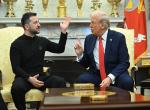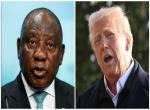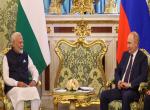China looms large on Indian public consciousness driven by cataclysmic COVID-19 virus that caused the global pandemic, aggression in 2020 and continued tense face-off in Eastern Ladakh. At the turn of the new decade three events stand out for mention. First, is the “Core Navigator and Helmsman” title bestowed on President Xi Jinping by the 5th Plenum of 370-odd-member 19th Central Committee of Communist Party of China (CCP) from 26 to 29 October 2020. Previously, it was Mao Zedong, Chairman of Communist Party of China from 1949 to 1976, who had been given the honorific title of the Great Helmsman. This Plenum was also remarkable in many other ways - it approved 14th Five-Year Plan (2021-2025) for National Economic and Social Development and Long-Range Objectives. It also adopted a 15 years long-term plan, to make China "a great modern socialist nation" by 2035.
With National Peoples Conference in 2018 approving removal of two-term limit on the Presidency, it had effectively allowed President Xi Jinping to remain in power for life. President Xi, who would have been due to step down in 2023, accordingly defied the tradition of presenting a potential successor during this Plenum. It seems well nigh possible that President Xi will remain at the helm for an additional ten years, or more likely till the interim timeline of 2035, till China becomes a great modern socialist nation.
Second, the EU and China concluded in principle the negotiations for a Comprehensive Agreement on Investment on 31 Dec 2020. Though the Chinese Foreign Direct Investment into the EU had increased exponentially over the last few years, this agreement in the background of COVID-19 and the ongoing US–China trade wars, will fuel China’s economy and technological development. More importantly, it will provide legitimisation to the Chinese Government and the CCP internationally. It also puts on back-burner issues pertaining to Chinese aggression evident against land neighbours, the two China Seas and internally.
It is likely that despite the pandemic, the Chinese economy as per IMF projections will be in positive by 1.5 to 2%. It has become apparent that economic decoupling from Chinese economy and global value chains is very complicated and difficult for the world. Accordingly in a reset of relationship, the US and other countries facing serious down-turn in economies will inevitably re-energise trade relations with China, to obtain a boost to their own countries. China will also take advantage of economic diplomacy through BRI spread over nearly 100 countries.
Third, China has recently expanded the power of its Central Military Commission (CMC) headed by President Xi Jinping, to mobilise military and civilian resources in defence of the national interest, both at home and abroad. Revisions to the National Defence Law, effective from 01 January 2021, bring out the over-riding powers to CMC in formulating military policy and decision-making powers. The legislation also stresses the need to build a nationwide coordination mechanism for the mobilisation of state-owned (SOE) and private enterprises to take part in research into new defence technologies covering conventional weapons, as well as the non-traditional domains of cyber-security, space and electromagnetic spectrum. Most importantly, stress is on military getting “capable of fighting and winning wars”, “full combat readiness” and that PLA must be ready “at any second”. Indeed the tone and tenor of the National Defence Law can only raise hackles and heighten concerns of the neighbours, more so India with disputed borders and already facing belligerence along the LAC.
Contextually, much has been written about the Chinese Dream, the one hundred year marathon and the Great Rejuvenation, with the timelines till mid 21st Century. Within China, and among the Chinese diaspora, it is a powerful narrative, etched in historical memories and national psyche; it resonates with peoples collective aspirations, and drives nationalism in the country. It apparently is not sloganeering, as the Chinese dream of a glorious future, of the nation rejuvenated to its glorious past has been hard-sold to the people.
The Ever-expanding Sinosphere
China had made phenomenal success over the last four decades, and in Purchasing Power Parity (PPP) terms, is already the world’s largest economy. China owes much of its economic success to its stated ‘socialism with Chinese characteristics’ – a euphemism for market-based capitalist approach, opening up substantially to foreign investment, regulatory liberalism, support to SOE and emphasis on manufacturing and productivity. This growth story is evident in transformation to an innovation-economy, with 58990 applications filed in 2019 through the World Intellectual Property Organisation, ending the reign of the US (57840). Innovation is the primary source of national power as it creates wealth, leads to technological advancement and further innovations. Huawei alone filed the maximum number of patents (4411) worldwide in 2019. In this journey, China has benefited from forced technology transfers, unfair trade practices, controlled access for foreign firms and regulatory favouritism for locals, especially the SOE.
The world had expectations that fruits of capitalism, increased globalisation and peoples’ interaction with the life-styles in liberal democracies will cause impetus to transform and even democratise China. These have been totally belied. Contextually, hence the currency of policy framework can be placed in a five circle Venn diagram. First, is the Chinese approach to the rules based international order. The international order was established post Second World War, well prior to China’s Independence embodied through the UN and Bretton Woods Institutions, and lately WTO. A much stronger China under President Xi Jinping since 2013, is increasingly disregarding international norms, as evident in the South China Sea, Eastern Ladakh, creeping in Nepal and Bhutan, or the disregard to the decision of Permanent Court of Arbitration in favour of Philippines on Spratly Islands. China benefited immensely from joining the UN in 1971 and the WTO in 2001. It is apparent that CCP does not seek any radical change in the international order, only tweak it in a manner, to benefit as also adjust it China’s own vision. Under President Xi, China’s foreign policies have become more ambitious and assertive, from its pursuit of leadership roles in UN agencies (four out of fifteen). In April 2020, China was appointed to a seat on the Consultative Group of the United Nations Human Rights Council, despite having a singularly imperfect human rights record in Xinjiang, Tibet, Hong Kong or Inner Mongolia.
Second is the issue of creating significant geopolitical motivations in its favour internationally. Provisioning infrastructure is how China desires to dominate the world. President Xi Jinping had previously rejected any ulterior “geopolitical calculations” behind the Belt and Road Initiative (BRI), underlined China’s commitment to “building a community with a shared future for mankind.” Speaking at the Boao Forum for Asia, he had stated that “China has no geopolitical calculations, seeks no exclusionary blocs and imposes no business deals on others.” However, investing in countries with poorer repayment capabilities or internal fragilities is risk-ridden, and China has exhibited willingness to accept the risk. A recent Centre for Global Development report found eight BRI recipient countries—Djibouti, Kyrgyzstan, Laos, the Maldives, Mongolia, Montenegro, Pakistan, and Tajikistan—at high risk of debt distress due to BRI loans. In part these concerns about debt sustainability or debt trap are offset by debts renegotiation or obtaining long lease of the completed project, like in the case of Hambantota Port in Sri Lanka. The inability to service the loans by the recipient nations does risk China’s own financial system and threaten to decelerate Chinese economy. Hence China rightly would face a serious test to preserve the BRI and maintain its own domestic financial stability. To continue despite the attendant risks, China obviously has both geopolitical and economic motivations behind the initiative. It can be opined hence that BRI is conceptualised and positioned as the engine for China’s geopolitical ambitions towards global leadership. Only this global leadership ambition can clarify China’s willingness to take the significant economic risk of overstretch and failed projects.
Third, are the issues of geopolitical space in territorial and maritime frontiers. The period of Chinese history called the century of humiliation, 1839-1949, with the Opium Wars, the Sino-Japanese Wars, Sino-French war and the imposition of unequal treaties that led to inner fragmentation, rankles in national collective psyche. China’s geopolitical aspirations, geostrategic and military actions aim to obviate constrains of strategic geography – the sea lines of communications (SLOC) through the inimical first Island Chain and the restive continental peripheral provinces. With illegal and disputed developments on islands and reefs of South China Sea, and key investments in missiles, ships, aircraft, and port facilities in distant ports are an obvious attempt to establish safer SLOC, and project its global aspirational reach.
On land frontier, CCP’s concerns relate to national unity and integrity with a distinction between core territory and frontiers. The restiveness of Uighurs in Xinjiang or erstwhile East Turkestan, the Mongols of Southern or Inner Mongolia, and Tibetans that inhabit in vast territorial frontiers are very major concerns. The broad nature of management of these ‘frontier’ regions reflects a linkage between external security and internal stability that stems from these restive ethnicities. All the economic development, attempts to subjugate or change of demography have not been able to subsume the ethnicities. India territorially borders both Xinjiang and Tibet, and has had historic ties with these peoples. The bordering countries to the restive periphery are hence the focus of long term Chinese strategy.
Fourth, is the pre-eminence and all-importance of CCP, as evident in President Xi’s 16-character dictum is, “The Government, the Military, Society and Schools, North, South, East and West — the Party leads them all!” CCP is charged with creating, executing the stratagems and substantially delivering on all fronts. It has seemingly become more powerful under President Xi Jinping, than the State Council - China’s cabinet. The Central Military Commission (CMC) and the Central Foreign Affairs Commission - CFAC (previously the Central Foreign Affairs Leading (Small) Group) exercise oversight and take decisions on foreign and security policies. With Chairmanship of both CMC and CFAC, and other many, many Leading Groups, with the President, the decision making on foreign and security policies remain under singular control.
PLA, a fundamental part of the Chinese Dream, is an armed wing of the CCP rather than a national military. A great purge, under the overall cover of campaign against corruption, has been on in the PLA over the last six years. As it is the Political Commissar system guarantees implementing decisions made by the Party, instils Party discipline, indoctrinates troops with political education and works with larger Party political system. Political commissars are tasked to further the CCP political objectives to maintain absolute control of the Party over the PLA. Political power with the CCP, hence, must be deemed as the foundational premise, and with aggressive Party building under President Xi, the legitimacy of the State is contingent on that of the Party. In this context, it is apparent that there is an obvious over-concentration of power with the President.
Fifth is the citizenry, the peoples of China and the inter se relationship that the State has with the citizenry. It is the imperative that to hold the country together and to achieve the national dream and rejuvenation project, it is imperative to ensure the implementation of economic policy to improve the living standards of the people and alleviation of poverty. It is stated that in the last four decades, 700 million people have been lifted out of poverty. The fears of social unrest are underlying and persistent however, as despite elevation of masses from poverty there are still massive income disparities and internal dissensions. Aging population, much increased life expectancy and declined birth rate are ominous, enticing CCP to remain extraordinarily intrusive and watchful, by curbing privacy and being ruthless.
It must be brought to fore that all is obviously not hunky dory in China, there are reports of repression and human rights violations, of the Uighurs, Mongols (in Inner Mongolia) and Tibetans, and in Hong Kong. There is rampant corruption, intrusive surveillance and loss of privacy of Chinese society, repression and punitive arrests in Hong Kong, global backlash against China for its mishandling of the COVID-19 crisis, concentration camps and even organ harvesting of Uighur prisoners. China’s domestic political character, the one-party state purges opposition or dissent, as the recent arrests in Hong Kong indicates, and is ruthless in punishing perceived delinquents. Case in point is also the possible internment of Jack Ma, which is bound to take its toll on market and affect private sector investment confidence.
China is an imperial power with revanchist, hegemonic, expansionist intent. It is apparent that China is assiduously creating a “Sinosphere” based upon undertaking infrastructural projects worldwide, with deep-set geopolitical ambitions. Through this Sinosphere, in time China will exert soft power far beyond the economic empire it is creating. Any challenge to the achievement of the National Dream, will hence be unacceptable, and may even warrant use of hard power.
In sum, it is difficult to predict what China will look like at the turn of the next decade. The PLA in this timeframe will aim at creating capabilities of contesting all domains of conflict - ground, air, sea, space, cyberspace and the electromagnetic environment. In 2018, President Xi Jinping had pledged that China would not compromise “even one inch” of any of its territorial and sovereignty claims. What did China convey to India then by the intrusions of 2020 – just obtaining slivers of disputed territory in inhospitable environs, or a secure movement corridor between Xinjiang and Tibet? As it is, G216 Highway further to the East of G219 and connecting Xinjiang and Tibet, is under construction – which will seamlessly connect to Kathmandu.
The larger issue is obviously of China’s geopolitical ambitions. India with borders with two restive provinces and independence of larger policies will rankle. The border question hence cannot be compartmentalised and put on a back-burner, it has the potential to flare-up at shortest of notice. The geopolitical ambitions of China may also transcend beyond the borders. In this oncoming era of uncertainty and increased relevance of the globally intertwined geo-strategic environment, India does need to envision and strategise for the next 15 years, and prepare for the same. Mindful of Realpolitik, there is a need to shed rhetoric, emotionality and sentimentalism. To avoid any strategic miscalculation, in our preparations for the future, we need to get the big picture analysis right, be smart in state craft, and accept the challenge as it presents itself.
(The paper is the author’s individual scholastic articulation. The author certifies that the article/paper is original in content, unpublished and it has not been submitted for publication/web upload elsewhere, and that the facts and figures quoted are duly referenced, as needed, and are believed to be correct). (The paper does not necessarily represent the organisational stance... More >>
Image Source: https://cf.geekdo-images.com/MMtFEDjizT-pgYjlbB34XQ__imagepage/img/ELuu-IJnPQM1k6gBKuthguxQkmM=/fit-in/900x600/filters:no_upscale():strip_icc()/pic2377666.jpg











Well articulated General. We ought to factor in the Chinese gameplan in formulation of our strategy. Enjoyed reading the article.
Post new comment